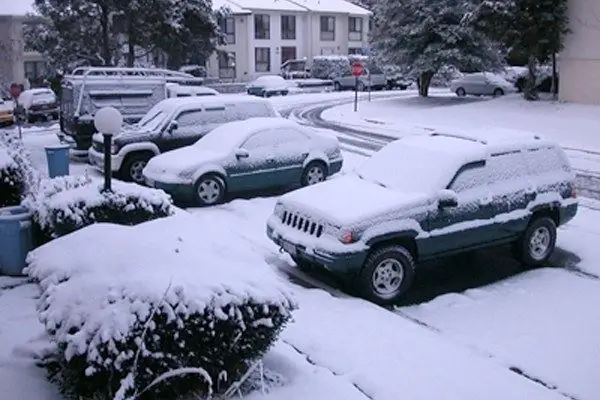- Author Maria Gibbs [email protected].
- Public 2023-12-16 03:05.
- Last modified 2025-01-22 17:48.
Winter conditions create additional troubles for car owners. You have to think about the upcoming trip in advance, preparing the car the day before and leaving early in the morning to warm up after a frosty night. This is the specificity of the Russian climate.

Instructions
Step 1
One of the common consequences of a frosty night is frozen door locks. So that such surprises do not happen to you when you would have to enter the cabin through the luggage compartment, do preventive maintenance. In winter, periodically, especially before the expected frosts, inject WD-40 aerosol or its analogues into the larvae of the locks.
Step 2
If the locks are still frozen, warm them up by turning on a regular hair dryer. In the event that the power supply is not available, attach a heating pad with hot water to the lock. In the absence of a heating pad, you can use a plastic bag filled with boiling water. You can heat the key on a lighter flame and then try to open the lock.
Step 3
The next moment is glass. If the car is parked in a locked garage, leave one glass partially closed. This will prevent the glass from freezing. Otherwise, when leaving the car overnight, open all doors for a couple of minutes and ventilate the interior. Excess moisture will go away and the temperature in the cabin and on the street will be relatively balanced.
Step 4
Do not put your car on the parking brake on the frosty night ahead. After the trip and the accompanying braking, moisture forms on the heated pads, which then, after freezing, can "glue" the pads. Better to limit yourself to the inclusion of 1st gear.
Step 5
Before a frosty night, it will be useful to take a battery into the house. If he remained in the car after turning on the ignition, do not rush to start the engine. Turn on the high beam headlights for a couple of minutes - this will warm up the electrolyte and revive chemical reactions. Remember, when the starter is turned on, the voltage drop is greatest. Do not make frequent multiple starts.
Step 6
After starting the engine, start warming up the cabin at low stove settings, turning on the internal air circulation. Driving without load can be started before the engine reaches operating temperature, so that it and the passenger compartment warm up faster.






